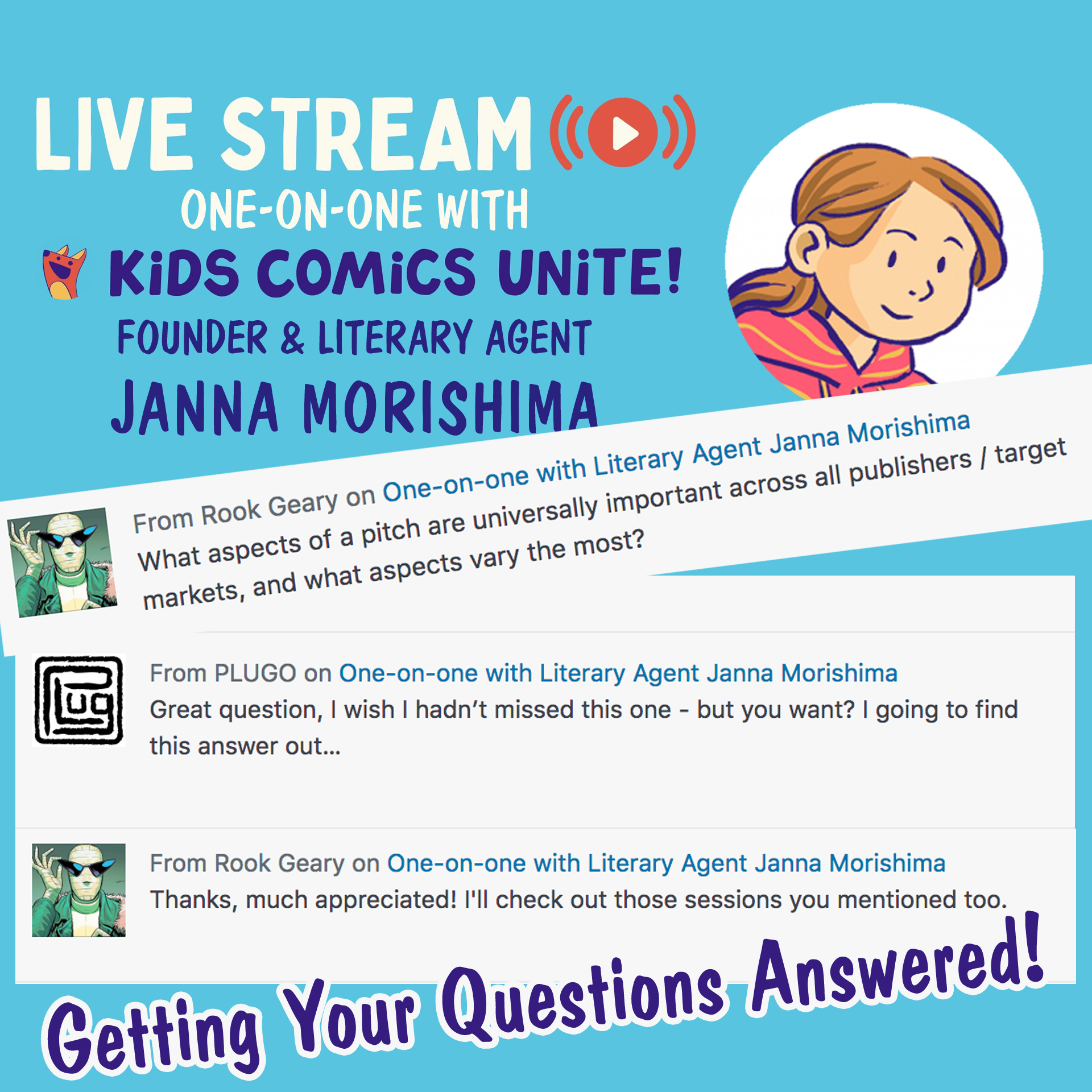This blog-post is a specific follow-up to The August 22, 2023 Live-Stream 1-on-1 with Literary Agent Janna Morishima. The grand finale to the my partnership with Kids Comics Unite and Crowdfundr. We took questions live in the stream and I also posted an invite for questions on this blog. Alas, there was one question which I only noticed after the stream had ended.

Now I couldn’t ignore this question, it was too good. Plus, I am devoted to all (non-bot) commenters so the least I could do was reply; and offer to find out.

As I set out to do so, coincidence would offer some great resources. Take a look at this highly informative video.
But There’s More!
Janna took some time out from her busy schedule to reply specifically to Rook Geary’s question.
Here’s my answer to the question, “What aspects of a pitch are universally important across all publishers / target markets, and what aspects vary the most?“ There are three main elements that are universally important to all publishers, when considering a pitch:
- It has a clear and compelling short synopsis.
In other words, the creator has summed up the storyline in a way that makes sense and is emotionally compelling.- The sample work gives a strong sense of what the final book will be like.
Pitches vary quite a bit in terms of how much manuscript and sample art are included. But all pitches need to convey “this is what the reader will experience when they read the complete graphic novel.”
Debut creators might need to include slightly more sample pages than an established creator does. If the sample work is a script only, it needs to include art notes that help the editor understand what will be happening in the final art.- It is clear from the pitch who the target audience is, and that the book has the potential to sell.
Factors that impact a publisher’s judgement of a book’s sales potential vary widely. It could be that the book is in a genre and category with high demand. It could be that the creator already has an audience and platform. It could be that the work itself is so strong that publishers think it might have awards potential, and would easily garner buzz.
It always helps to include comp titles in your pitch, so publishers understand what target audience you’re aiming at, and how you see your book fitting into the market.In terms of what aspects of a pitch vary the most, it usually depends more on the work itself and the creator than it does on the publisher. Pitching a project by a single author-illustrator is different than pitching one by a creative team, and different than pitching a script by a writer-only. A debut creator often needs to create a more extensive pitch than a creator with a track record does.
Amazing. I’ve always enjoyed my own sort of investigative journalism, and the results here have been worth it. But if you still have questions, there’s always room for one more. But I think the best way to have them answered would be by registering for Janna’s own workshop on the subject.

| If you want even more insights into pitching your graphic novel, including walk-throughs of complete pitches, Kids Comics Unite has an incredible workshop for you this Saturday! Click below to register for the KCU Pitching Workshop on Saturday September 9th at 1 PM EST. If you can’t attend live, you can still register and you’ll be sent the replay of the whole event. |
